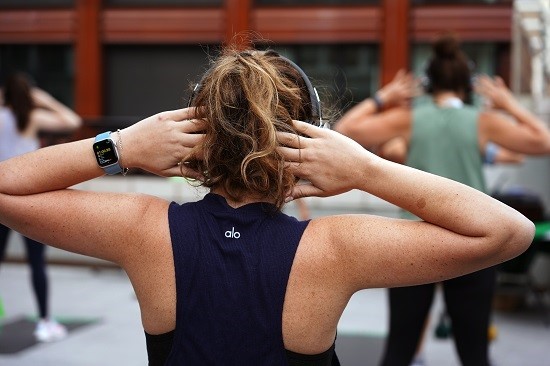Receiving a tiny monetary reward at the right moment
could play an outsize role in motivating us to
exercise, according to a
large-scale and innovative new study of how to nudge people to show up at the
gym.
اضافة اعلان
The study, published in Nature, involved 61,293 American gym
members, 30 prominent scientists working at 15 universities, and more than 50
different motivational programs. In addition to reward points, incentives
ranged from a free audiobook for
gym use to cheery instructions from
researchers to reframe exercise as fun. While some of the programs galvanized
additional gym visits, others, including some the scientists had absolutely
expected to inspire more exercise, did not.
The study’s findings, positive, and the reverse, offer timely
insights into how the rest of us might better motivate ourselves to keep our
upcoming New Year’s exercise resolutions. But just as important, the study, in
its ambition, scope, and structure, is meant to serve as a road map for future
investigations into the mysteries of
human behavior and why so many of us act as
we do and sometimes, despite our best intentions, keep skipping that next spin
class.
The science of human behavior, including whether and why we
exercise, can be squishy and rife with research hurdles. Many past studies have
looked at how to build habits, for instance, or instill confidence or stick to
an exercise routine. But the vast majority of those studies have been
small-scale or homogeneous, recruiting only affluent, well-educated white
people, for example, or healthy, young college students, or only men or only
women.
 (Photo: Envato Elements)
(Photo: Envato Elements)
Those studies have also used a wide range of methods to track
behavior change, making it difficult to compare data from one study to another.
In addition, many have relied on subjective measures, such as asking people how
they feel during and after a study, a topic on which we can be, intentionally
or not, untrustworthy. The result has been a replication crisis in behavior
science, with researchers unable to repeat the findings of many past studies,
calling the original results into question.
These issues naturally concerned Katy Milkman, a professor at
the Wharton School of the
University of Pennsylvania and author of the 2021
book “How to Change” (one of Well’s favorite health books of the year) and her
colleague Angela Duckworth, also a professor at Wharton and author of the 2016
bestseller “Grit.” Among the foremost behavioral scientists at work today, they
were convinced their field could and should become more scientifically
rigorous, which led them to begin noodling with the notion of megastudies.
A megastudy, as they defined the concept, would be large in
scale, involving thousands of participants, and not the dozens commonly used in
behavioral research. It would also randomly expose large groups of volunteers
to a range of behavior modifications or other interventions, employing
objective measures to assess whether an intervention had actually worked.
These ideas brought the research team to the 24-Hour Fitness
chain. Already, they had decided that one of their first megastudies would
concentrate on exercise behavior, in part because it is easy to measure
increases or declines in workouts and visits to the gym, but also because
encouraging people to exercise more can alter lives by
boosting health.
With its nationwide network of hundreds of gyms, 24 Hour Fitness
offered the researchers millions of potential participants for their massive
study. Then they invited dozens of other scientists to come up with
interventions they felt would up people’s willingness to work out. They also created
an umbrella program called “Step Up,” which gym members could choose to join,
earning Amazon reward points worth about $1 once they did. “Step Up” promised
to provide them with new ways to motivate themselves to work out.
 Students work out at a gym in Columbus, Ohio, September 8, 2021. Among 52 incentives to exercise, giving people a 9-cent award if they returned to the gym after missing a workout helped the most. (Photo: NYTimes)
Students work out at a gym in Columbus, Ohio, September 8, 2021. Among 52 incentives to exercise, giving people a 9-cent award if they returned to the gym after missing a workout helped the most. (Photo: NYTimes)
More than 61,000 members joined “Step Up,” after which the
scientists divided them into 53 groups. One group, which served as a control,
changed nothing about their lives or gym time. The others were then assigned to
receive a basic package of motivational help that included advice to plan the
exact day and time of each workout, a texted reminder from the research team
about those plans, and a minuscule reward if they did work out, worth about 22
cents in reward points. These kinds of efforts can be key to increasing
motivation, the researchers felt, and would serve as a baseline test of whether
the study was inspiring people to exercise more.
On top of this basic package of reminder texts and small
rewards, the researchers then randomly assigned the gym members who were not in
the control group to one of 52 different motivational programs developed by the
researchers. In one, for example, the members earned reward points worth about
$1.75 every time they visited the gym; in others, they shared their workouts
with friends on
social media, signed a fitness pledge to show up regularly or
agreed to reflect after each workout on how it had impacted them. Each group
included at least 455 participants. Each intervention lasted a month.
Before and during that month, the researchers tracked how often
people turned up at their gym. They also asked outside exercise and behavior
experts which interventions they expected would be most successful.
The results surprised almost everyone. Duckworth, for one, told
me she had thought encouraging people to view workouts as fun would get them to
the gym more often, but that group showed only a minuscule increase in gym
visits. (Almost everyone in the intervention groups worked out a bit more often
than the people in the control group.)
The most successful intervention, though, turned out to be
giving people the equivalent of 9 cents worth of reward points if they returned
to the gym after missing a planned workout. That program increased gym visits
by about 16 percent, compared with the baseline package of planning and text
reminders. Almost as effective was simply giving people a bigger reward, worth
$1.75, every time they worked out. It increased exercise by about 14 percent,
compared with the baseline package.
Overall, the findings suggest that if we want to exercise
regularly in 2022, we should, in general:
• Plan a reasonable workout schedule.
• Program reminders of that schedule into our phone or with an admonitory spouse or training buddy.
• Find small ways to reward ourselves when we exercise as planned. (Drop a dollar into a bowl for every workout, for instance, and let the proceeds mount.)
Read more Health



